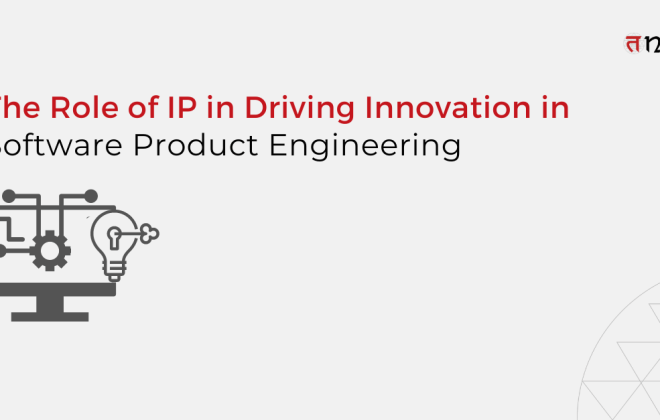
Accelerating Software Delivery with Scrum: A Guide to Successful Adoption
Table of Contents
ToggleOrganizations increasingly turn to Agile methodologies like Scrum to streamline processes, enhance collaboration, and deliver high-quality products in today’s fast-paced software development landscape. If you find yourself in an organization new to Scrum approach to delivery, this article will guide you on effectively adopting Scrum principles and reaping the benefits of improved deliveries. We will also highlight potential pitfalls to avoid during the adoption journey.
Scrum approach to delivery has made great progress as a widely used and effective project management paradigm for quickly completing challenging tasks. Software teams use Agile approaches 86% of the time, with 81% utilizing Scrum throughout several iterations. Notably, compared to teams that don’t estimate, Scrum-embracing teams have seen a staggering 250% improvement in quality. Additionally, as of 2023, the Scrum Alliance has certified more than a million experts internationally, demonstrating the widespread acceptance of Scrum as a top-choice Agile framework.
Embracing Innovation: A Roadmap for Successful Scrum Adoption
In today’s rapidly evolving landscape, embracing innovation is paramount for organizational growth. Among the proven methodologies, Scrum is a dynamic framework that drives effective project management. The following guide delves into the intricacies of successfully implementing Scrum in project management, equipping you with the insights and strategies to harness innovation, optimize workflows, and achieve intended project outcomes.
- Embrace the Scrum Framework: To kickstart your Scrum adoption journey, it’s crucial to understand the critical components of the framework and their roles:
- Product Owner: Ensure a dedicated Product Owner is responsible for defining and prioritizing the product backlog.
- Scrum Master: Appoint a Scrum Master who guides the team and facilitates Scrum events.
- Development Team: Empower a self-organizing team to deliver increments of the product during sprints.
- Establish Clear Goals and Objectives: Align the team to adopt Scrum and define measurable goals to track progress. Set realistic expectations and communicate them transparently across the organization.
- Conduct Training and Workshops: Educate the team about Scrum principles, values, and ceremonies through workshops and training sessions. This will foster a shared understanding and a common language, ensuring everyone is on the same page.
- Start with Small, Iterative Changes: Introduce Scrum gradually by starting with a pilot project or a small team. This allows the team to learn and adapt while minimizing disruption to ongoing projects. As the team gains experience and confidence, scale Scrum across the organization.
- Foster Cross-functional Collaboration: Encourage collaboration and communication among team members. Break down silos and foster cross-functional expertise, enabling the team to collectively take ownership and deliver value.
- Prioritize and Refine the Product Backlog: Work closely with the Product Owner to prioritize the backlog based on customer value. Regularly refine and groom the backlog to ensure it is well-defined and actionable.
- Embrace Empirical Decision-Making: Scrum thrives on empirical data. Encourage the team to embrace inspection and adaptation through regular retrospectives and use metrics to measure progress, quality, and velocity. Make data-driven decisions to continuously improve.
- Promote Transparency and Communication: Create an environment of trust and transparency where team members feel safe to raise concerns and share their progress. Encourage open communication and ensure that impediments are addressed promptly.
Pitfalls to Avoid in Scrum Implementation
To ensure a successful Scrum adoption, the software product engineering services should mindful of these common pitfalls:
- Lack of Commitment: Without buy-in and commitment from the entire team, the adoption process may falter.
- Insufficient Training: Inadequate understanding of Scrum principles and practices can hinder effective implementation.
- Micromanagement: Trust the team to self-organize and avoid micromanagement, as it stifles creativity and ownership.
- Neglecting Continuous Improvement: Continuous improvement is the essence of Scrum. Ensure retrospectives are conducted and feedback is acted upon.
Real-Life Scrum Adoption Challenges
As organizations increasingly adopt the Scrum methodology to enhance project management, various real-life challenges emerge. The following section delves into these issues, offering insights into overcoming obstacles and ensuring successful Scrum adoption.
Real-life Problem 1
Lack of Product Owner Involvement Problem: The Product Owner is not actively engaged or available to the development team, causing requirements clarification and prioritization delays.
Solution:
- Encourage regular collaboration between the Product Owner and the team by scheduling dedicated time for backlog refinement, sprint planning, and daily stand-ups.
- Emphasize the importance of the Product Owner’s involvement and facilitate open communication channels to ensure quick decision-making and timely feedback.
Real-life Problem 2
Scope Creep and Changing Requirements Problem: Requirements continuously change throughout the project, leading to scope creep, missed deadlines, and compromised quality.
Solution:
- Implement a robust change management process that includes clear criteria for evaluating and approving changes.
- Encourage the Product Owner to prioritize changes based on their impact and value, allowing the team to focus on the most critical tasks within each sprint.
- Regularly communicate the importance of stable requirements and set realistic expectations regarding the impact of changes on delivery timelines.
Real-life Problem 3
Lack of Cross-functional Collaboration Problem: Team members work in silos, resulting in communication gaps, delays, and misalignment between different roles and departments.
Solution:
- Promote cross-functional collaboration by fostering a culture of knowledge sharing and collective ownership.
- Encourage team members to participate in cross-functional activities, such as pair programming, code reviews, and knowledge transfer sessions.
- Facilitate regular communication channels, like daily stand-ups and sprint reviews, to ensure effective collaboration and timely identification and resolution of dependencies.
Real-life Problem 4
Inefficient Sprint Planning and Execution Problem: Sprint planning and execution take longer than expected, reducing productivity and missing sprint goals.
Solution:
- Focus on improving the sprint planning process by ensuring that user stories are well-defined, estimated, and properly prioritized before the sprint starts.
- Encourage the team to break down tasks into smaller, manageable units and set realistic sprint goals.
- Continuously monitor progress during the sprint and address any issues or impediments promptly through daily stand-ups and frequent communication.
- Conduct retrospectives to identify process improvements and implement them in subsequent sprints.
Real-life Problem 5
Insufficient Testing and Quality Assurance Problem: Testing and quality assurance activities are rushed or neglected, resulting in more defects and lower product quality.
Solution:
- Emphasize the importance of testing and quality assurance throughout the development process.
- Allocate dedicated time for testing activities within each sprint and involve the QA team early in the development cycle.
- Implement automated testing frameworks and tools to speed up testing processes.
- Encourage a culture of quality ownership among all team members and prioritize the resolution of critical defects before delivering new features.
Remember, these real-life problems and solutions may vary depending on each organization’s specific context. It’s essential to adapt and tailor the solutions to address the unique challenges your team faces in adopting Scrum and Agile principles successfully.
Explore Tntra’s transformative success stories. See how we empower businesses with innovative solutions. Dive into our case studies now!
Conclusion
Adopting Scrum is an exciting journey that can transform your software development processes and significantly improve delivery outcomes. By embracing the Scrum framework, setting clear goals, promoting collaboration, and fostering a culture of transparency, your team can unleash their potential and deliver value consistently.
Remember, successful Scrum adoption requires patience, perseverance, and continuous learning. Celebrate successes, learn from failures, and adapt your approach to suit your organization’s unique needs. With dedication and a commitment to Agile principles, your team will experience the tangible benefits of accelerated software delivery and improved customer satisfaction.
Tntra is a leading software product engineering company with expertise in implementing Scrum methodology for seamless product development.
Contact experts at Tntra today for successful and seamless Scrum adoption.
Happy Scrumming!





